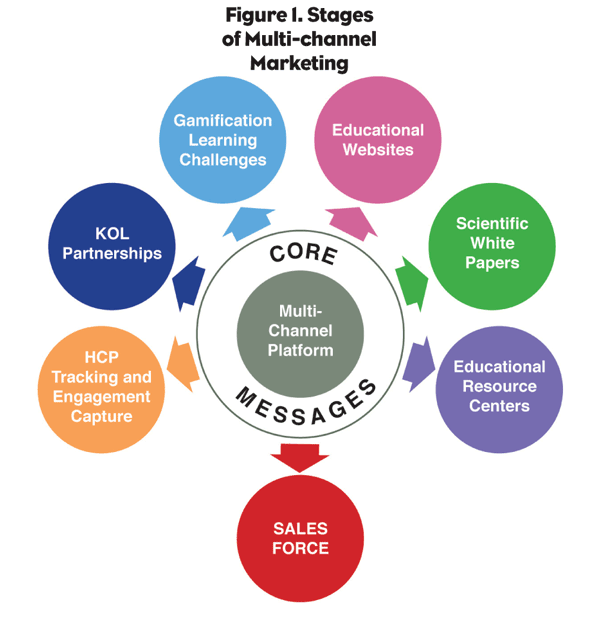As we all know, much has been written about the benefits of multi-channel communications. In the marketing world, the topic is so ubiquitous that you would swear everybody is handling it successfully and that the topic has almost become “old hat.” How far from the truth that really is.
In our time-crunched and multi-deviced world, multi-channel communications usually translate to doing your best to determine where you think your customers are and then serving up a series of one-off tactics. But that’s just not enough—nor is it very effective.
In the case of HCPs, a marketer’s challenges include working within the peripatetic nature of each HCP’s day, identifying the “trusted sources” HCPs engage with during their very limited time, and discerning the kinds of information they are motivated to seek. Upon reflection, the logical first step in pursuing meaningful multi-channel communications is integrating your messages in the context of the larger information-seeking platform where HCPs are already comfortable.
Physicians are creatures of habit just like anybody else—and naturally seek to streamline and optimize their time. In the busy world of HCPs, a trusted and reliable source invariably provides consistent and relevant content, i.e., important news and “must have” clinical content in all the channels physicians find desirable. As marketers strive for access and attention—a tough assignment these days for sure—the smart ones know that engaging HCPs within a framework they already trust and value translates to built-in attentiveness, receptivity and willingness to act. If content is king, then context is the queen bee.
So how does this translate for the marketer in the real world? Working with a company that has succeeded in becoming a true “trusted source” and has extensive HCP access and attention is a wise way to start. With the multi-channel platform already in place, the exercise for the pharma marketer becomes one of smartly leveraging brand assets in a continuum of cross-channel communications. Once core content has been developed, disseminating it through numerous channels and devices could resemble any or all of the stages displayed in Figure 1—all proven channels of engagement!
In addition to high ROI expectations in a coordinated effort such as this, there are other benefits. Gamification tactics that employ learning challenges, for example, are a great way to determine what each target HCP knows and doesn’t know. We call it MD-IQ. The brand team can pinpoint learning gaps and subsequently plan for targeted and relevant messaging—at the right time and to the right doctor—while bringing the sales force in as an important spoke in the multi-channel wheel.
In conclusion, smart HCP communications is far more than just a great message—it’s the whole package of access, preferred channel, engagement and desired actions.







